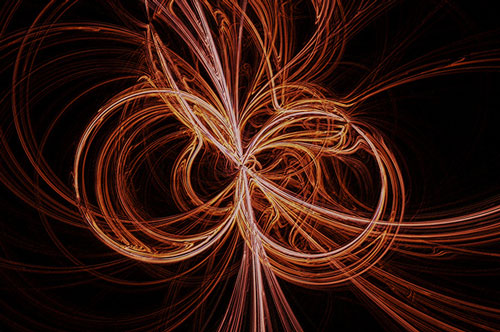| Mar 27, 2012 |
Copper-based materials show strange spin states
|
|
(Nanowerk News) Just as water, ice, and steam are all phases of the same material that are influenced by temperature and pressure, new research shows how transitions of state work in very simple lattices primarily composed of copper.
|
|
When it comes to trying to understand a variety of different molecular phenomena, like magnetism and superconductivity, researchers look to the "spin states" of particles located on a lattice. Unlike many lattice studies, which look at the position of particles or atoms in three dimensions, a new experiment performed at the U.S. Department of Energy's Argonne National Laboratory investigated the response of more simple two-dimensional lattices to extreme pressures.
|
|
The study's lead author, Argonne physicist Sara Haravifard, explained that the research experimentally proved a result that had heretofore only been expected theoretically. "It's important to understand how spins interact with each other so we can get a picture of the behavior of more complicated systems," she said.
|
 |
| Copper-based materials show strange spin states.
|
|
The material under study, strontium copper borate, exhibits two separate ground states. In one, the cumulative spins are zero, so the material is not magnetic. In the other, the system will go into an ordered state, and the material exhibits a special form of magnetism known as "antiferromagnetism."
|
|
According to Haravifard, the spin structure of the material is primarily controlled by the quantum mechanical relationships between the copper molecules, which in turn influences which of two different ground states the lattice will most likely occupy. "The answer to the question of how the material will look really depends on the interactions between each copper's nearest neighbors," she said.
|
|
The high-energy X-rays produced by Argonne's Advanced Photon Source reveal only part of the material's characteristics. "In this case X-rays can 'see' the crystal structure of the lattice, not the magnetism," Haravifard said.
|
|
However, she added that both the lattice and the magnetic behavior evolved in tandem with temperature. Haravifard and her team used diamond anvil cells to generate the extreme pressures necessary to observe the change in the ground state.
|
|
"What's important to realize is that if we can understand exactly how the material changes as we adjust the applied pressure, we can control the formation of the different ground states," she said. "In this system, what nature told us was that there is a very strong magnetic and lattice-structure coupling."
|
|
In the long-term, Haravifard's research into spin states could "bridge the gap" to new classes of exotic materials with a range of "tunable," or controllable, properties. Similar behaviors have been shown in high-temperature superconductors, and the manipulations performed in the new study "supplement our strong theoretical understanding of these materials," Haravifard said.
|
|
The research was supported by the National Science Foundation and the DOE Office of Science, which also supports the Advanced Photon Source. An article based on the study recently appeared in the Proceedings of the National Academy of Sciences ("Continuous and discontinuous quantum phase transitions in a model two-dimensional magnet").
|
|
|

